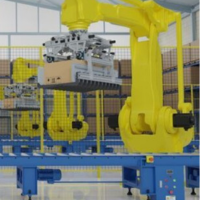Why You Need a Connected Shop Floor
Your shop floor is central to your business, so why do so many manufacturers still rely on paper to manage it?

Shop floor data collection is an essential process for optimizing manufacturing operations.
Your shop floor is the heart of your manufacturing business. But how effectively are you using the data it generates? For many manufacturers, shop floor data collection remains an underused tool that can boost efficiency, improve decision-making, and cut costs.
Managing complicated BOMs, custom orders, and tight schedules requires real-time visibility into shop floor operations. Shop floor data collection provides visibility by gathering information from machines, workers, and workflows. With this data, manufacturers can streamline operations, improve oversight, and make smarter decisions. Shop floor data can also reduce waste and downtime, making it an essential tool for cutting costs and staying competitive.
Shop floor data collection involves gathering important information from your shop floor, including production rate, machine speed, cycle times, labor use, quality fallout, and downtime.
Often, if data was collected at all, it was done manually. But, manual data collection comes with problems. Human errors like omission, bias, or misreading numbers can lead to inaccurate data. Manual systems are also prone to siloed data that’s harder to share and increases the risk of further errors.
Automating shop floor data collection can solve these issues. Sensors, ERPs, and other Industry 4.0 tech gather data and send it to be analyzed. The analyzed data is then displayed in dashboards, integrated with other tools, or used to trigger alerts and automated tasks. This real-time visibility leads to quicker decisions, better reporting, and smoother shop floor operations.
Your shop floor is central to your business, so why do so many manufacturers still rely on paper to manage it?

Shop floor data collection involves capturing key information about production, labor, materials, quality, and machines.
But collecting data is just the start: The real value comes from analyzing and using it. Tracking and analyzing data can help you monitor processes, improve efficiency, create accurate quotes, and keep costs under control.
For instance, tracking work orders and machine performance can highlight bottlenecks, while monitoring labor hours and materials ensures efficient resource use. Quality metrics like defect rates and inspection results help maintain high standards, and equipment data supports predictive maintenance to minimize downtime.
Collection and analyzing shop floor data can help you:
Integrating shop floor data into an ERP system unlocks even greater potential. An ERP connects shop floor information with other business functions like accounting, inventory, and sales, giving you real-time visibility across your entire operation. With everyone working from the same accurate, up-to-date data, you can make smarter, faster decisions.
ERPs also help with collecting and analyzing shop floor data. They track labor usage to ensure employees are working on the right tasks, monitor production performance in real time, and quickly identify bottlenecks or inefficiencies. By tying shop floor activities to your broader business goals, an ERP makes your operation more efficient, connected, and competitive.
Capturing shop floor data is critical for today’s manufacturers. It helps streamline processes, improve productivity, and make smarter decisions. Combined with an ERP system, it gives you even more value—full visibility and control over your operations. Don’t let your shop floor data go to waste. Use it to gain insights that can transform your business.
Ready to unlock the power of shop floor data collection? Learn more about how our ERP solutions can help you capture and use shop floor data effectively.
"*" indicates required fields